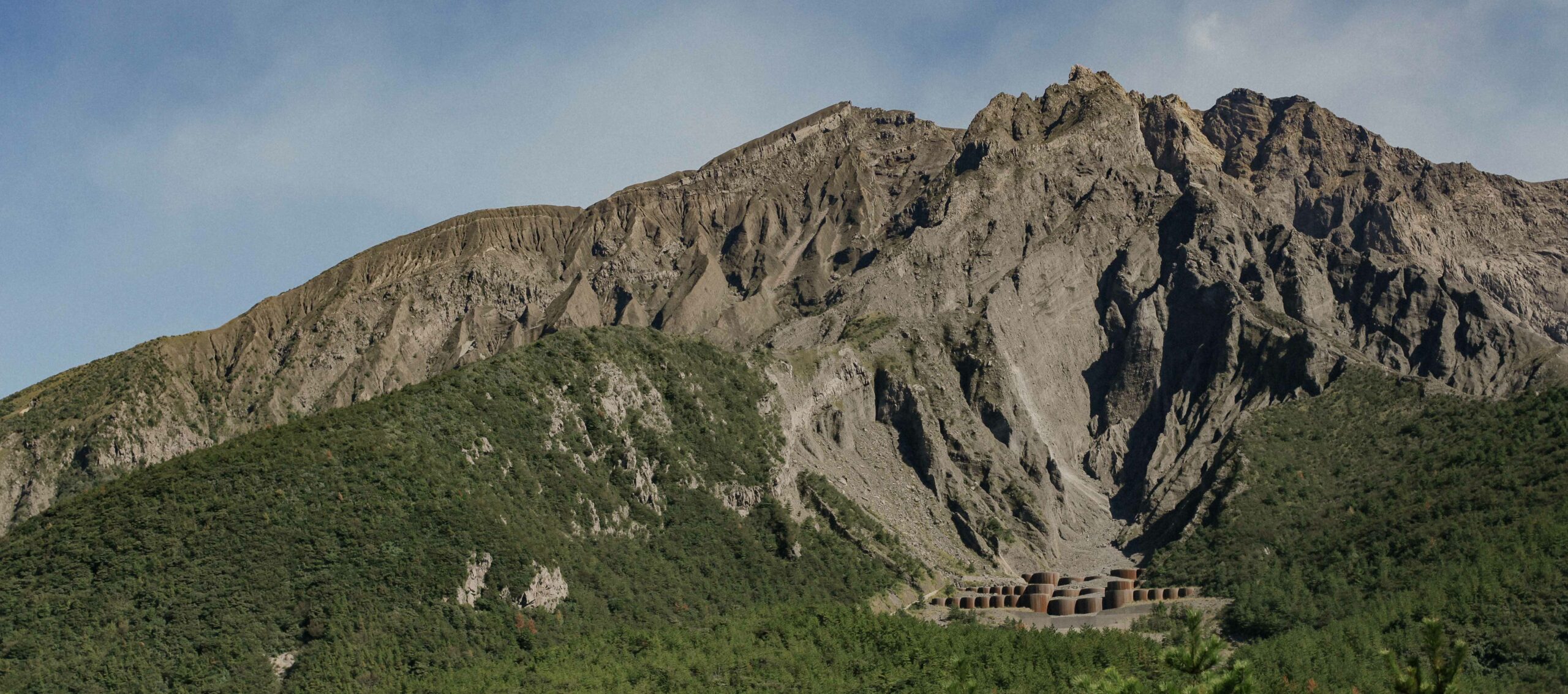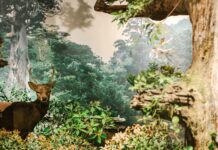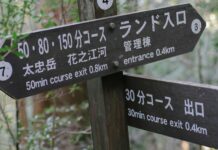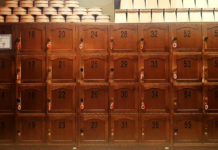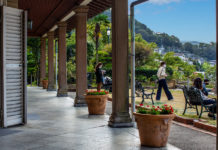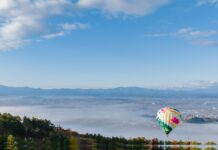‘Sakurajima’ is a deceptive name. Translating to ‘Cherry Blossom Island’ in English, it conjures an image of a hazy pink wonderland, perhaps also home to some kind of Pokémon gym. Alas, no. It’s actually Japan’s most active volcano. Fancy a stroll?
In true ‘only-in-Japan’ style, it’s perfectly possible to take a pleasant walk around Sakurajima without genuinely risking your life. You can even take a little tourist bus all the way around the island’s perimeter, stopping for ice cream and foot baths, and probably not thinking too much about that time in 1914 when the volcano exploded with such sustained force that 159 million m² of ash was ejected into the surrounding land, sea and sky.
It’s probably also better not to think about the fact that Sakurajima is, like all volcanoes, simply a vent for a much larger caldera. In this case, Sakurajima is the conduit of a churning vault of pressurised magma named the Aira caldera. If you’re anywhere at all in Kagoshima, the Aira caldera is boiling away beneath your feet. It’s easy to question why this part of Japan is even inhabited in the first place; but the volcano gives life, as well as taking it. Volcanic soils are the most fertile on earth, and Sakurajima is no exception. The island has even become famous for growing monster radishes, world class satsumas, and making volcanic pottery. So, what’s the occasional cataclysmic eruption between friends?
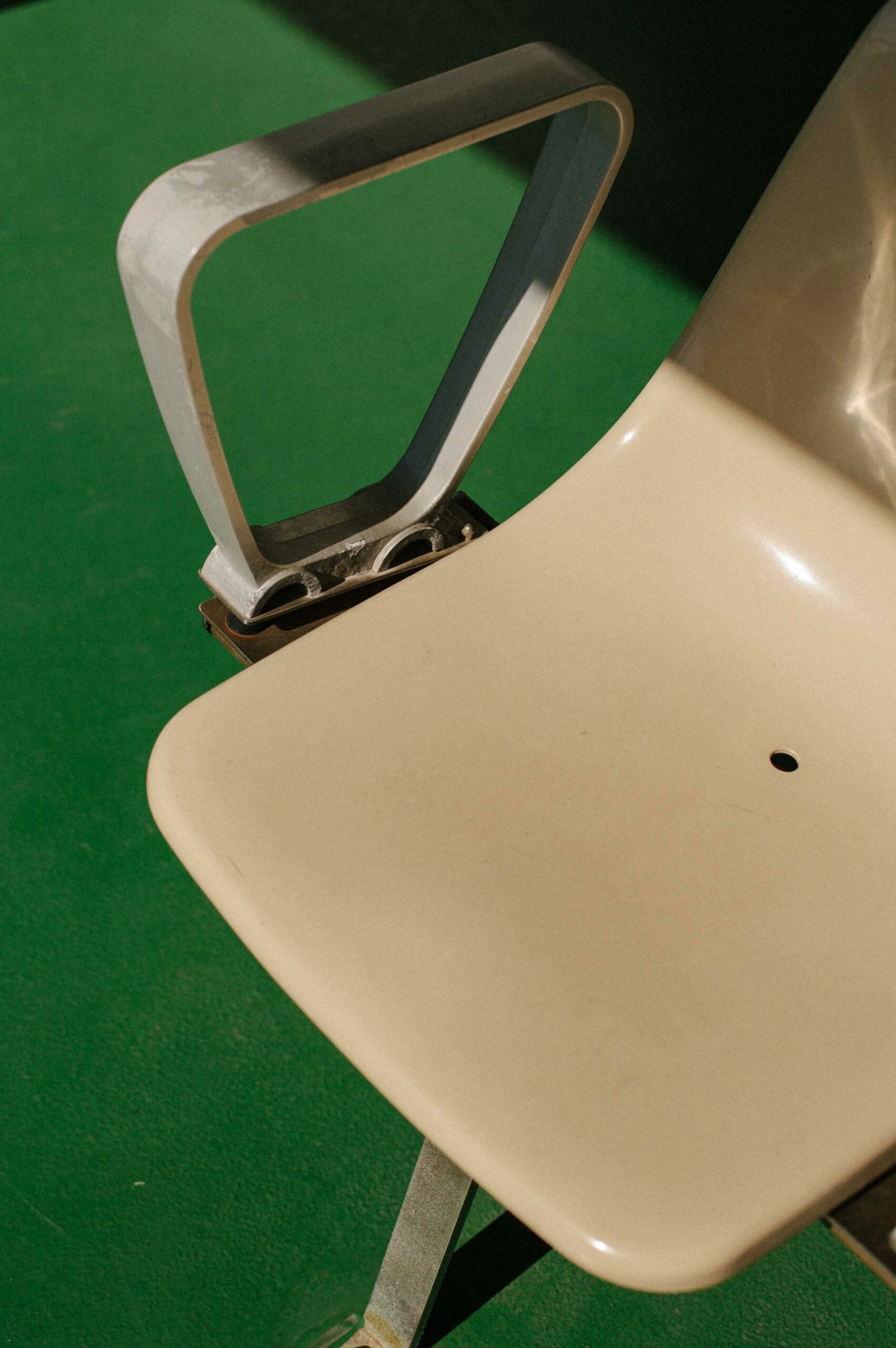
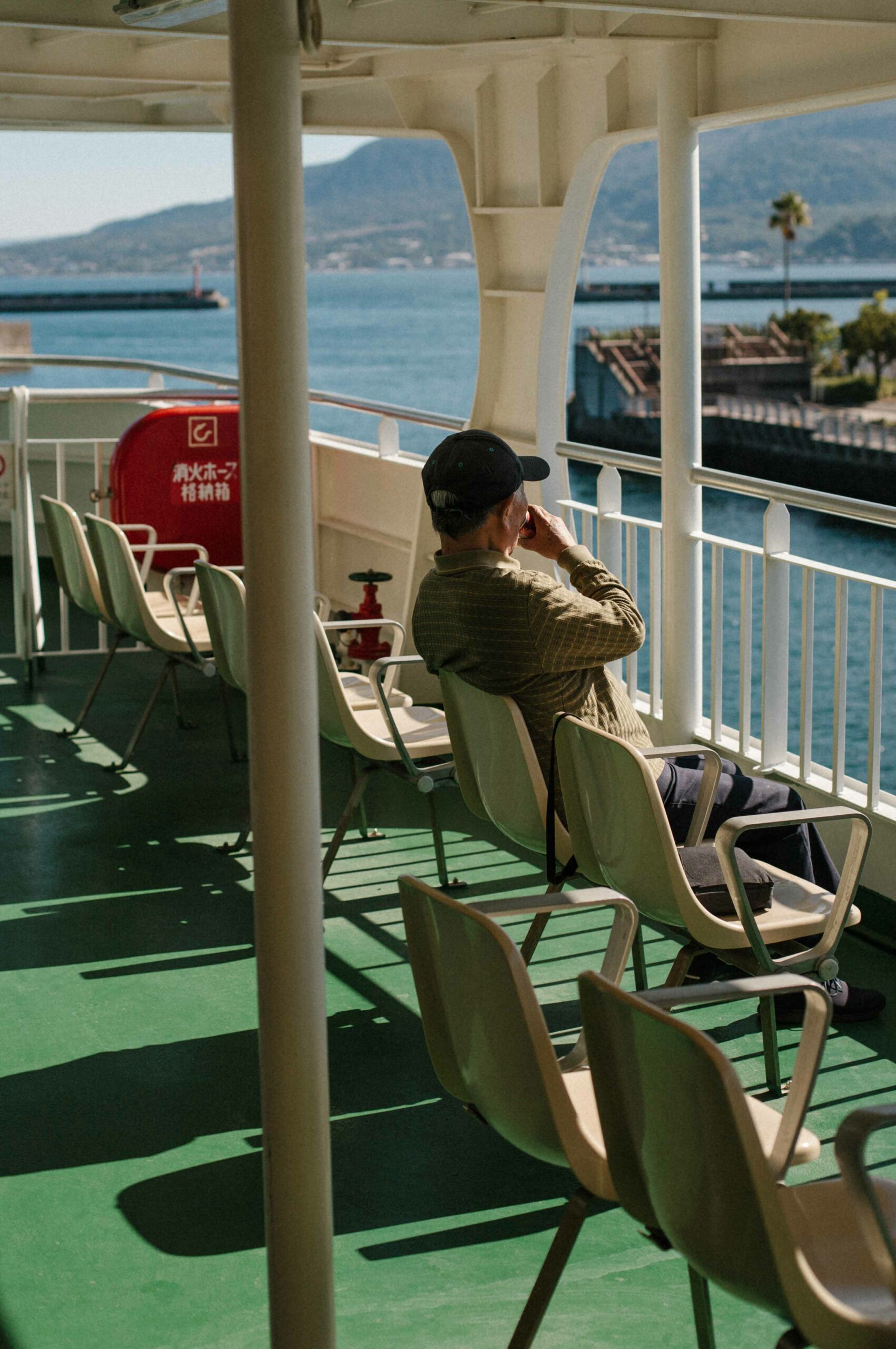
A visit to Sakurajima island makes a great half-day or full-day adventure. The island ferry costs ¥200 for a return trip, and runs every fifteen minutes, 24 hours a day. Once you arrive, the day is yours. You can buy a ‘day pass’ for a local bus service, or a ‘tourist ticket’ for the special tourist bus which drives the full circumference of the island in an anti-clockwise direction. For a less demanding half-day, or slow full-day visit to Sakurajima, a local bus pass will offer plenty of fun and interest, and a gentle hike along well-paved seaside tracks will give you a chance to see the island’s wildlife and lava fields up close. Kagoshima City’s tourism board also has an excellent English language website, which offers insights and itineraries if you’re unsure of what to prioritise. The tourism board has also published free digital editions of all of their information pamphlets and guides, which you can find here.
A great way to spend half a day on Sakurajima would start with a wander over to the island’s visitor centre. After arriving by ferry, drop by the bus ticket office, which is also inside the ferry port. Instead of riding ‘tourist bus’, buy a ¥500 adult day pass for the ‘Sakurajima Island View Bus’, which runs on a loop between Sakurajima ferry port and the Yunohira Observatory. Hopping on the bus at the stop outside the ferry terminal will carry you through town to the visitor centre. The centre focuses on the fascinating natural history of Sakurajima, and has displays, a mini-cinema and a gift shop. The gift shop sells everything from tasteful ukiyo-e-style volcano postcards, to tubes of volcanic ash and volcanologists’ field research notebooks. The cinema shows an engaging film of the island’s history, and will run whenever you ask the staff to play it for you. Be sure to ask for the version with English subtitles (“Eigo jimaku, onegaishimasu!”).
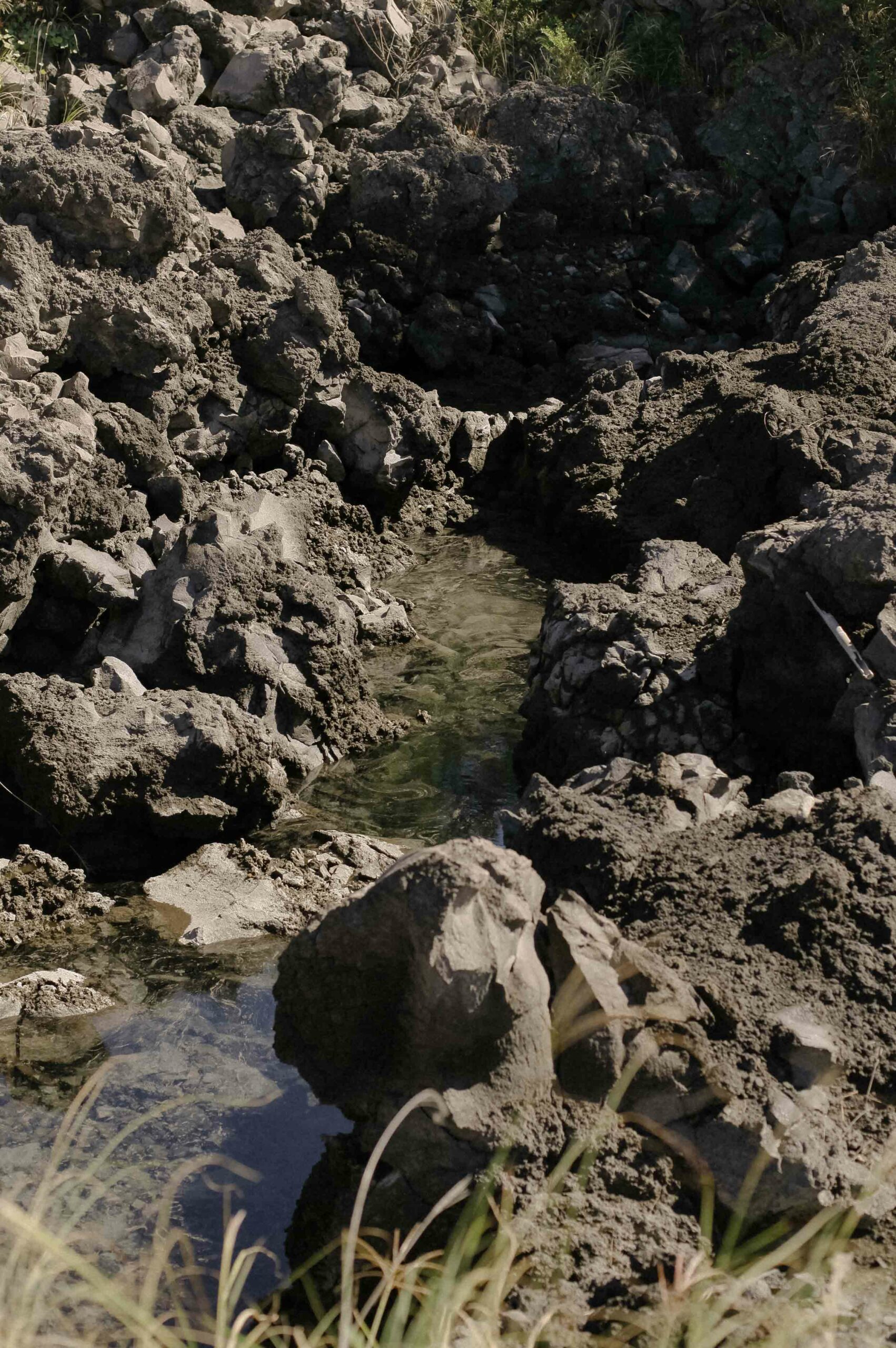
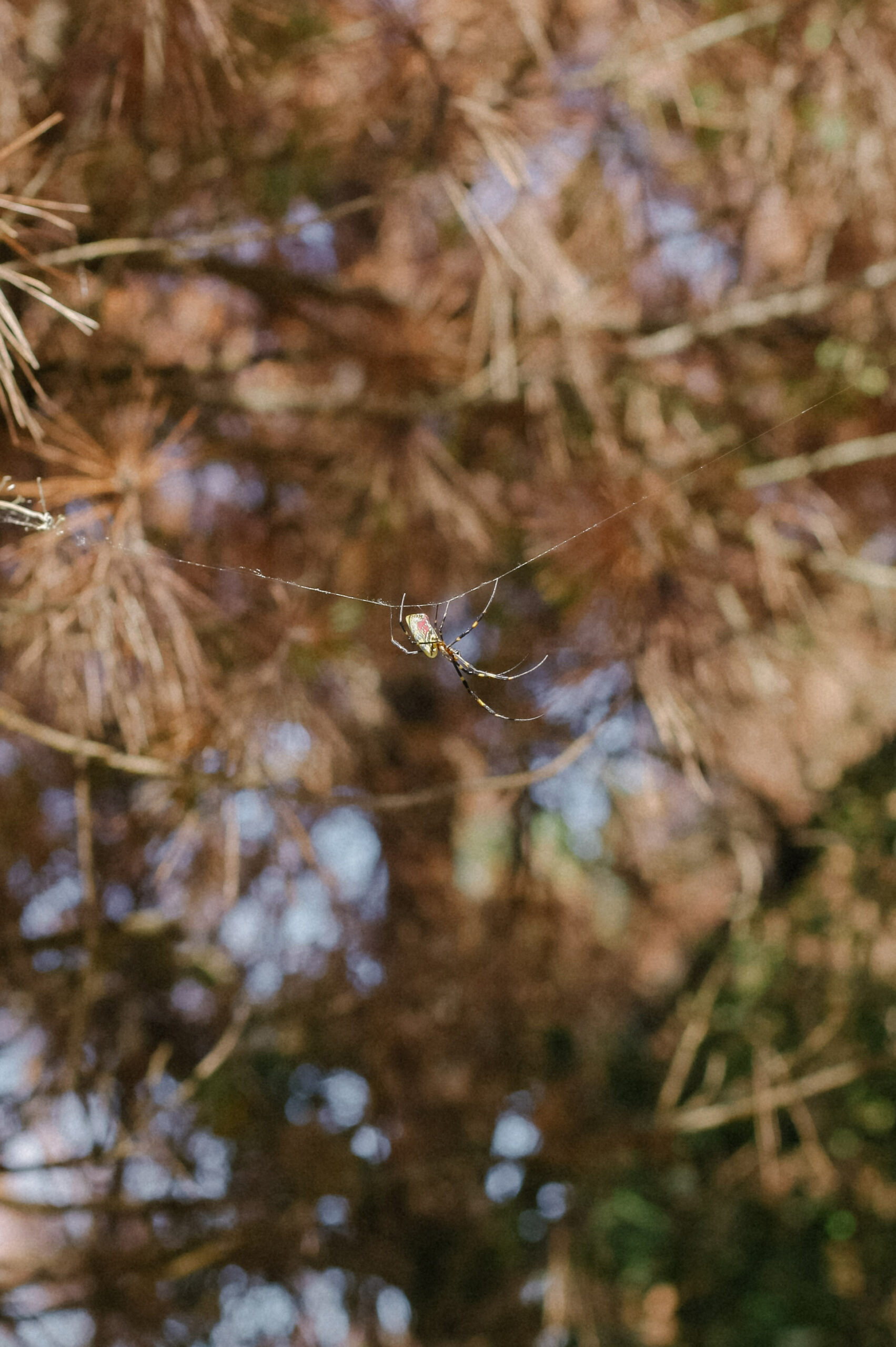
From the visitor centre, it’s a two-minute walk to the volcanic foot baths, where you can give your feet a relaxing soak in the remarkably warm mineral water. Sakurajima is also home to a number of ‘cared-for’ cats, and several of them convene in the soft grasses around the foot baths. This is your sign to bring cat biscuits in order to win some new friends.
From here, following this walking route will give you a relaxing tour of the island’s flora and fauna (again, it’s cats). It’ll also take you past several ‘pillow lava’ fields, many of which were formed during the volcano’s 1914 eruption. This stretch of the island has been recolonised by plants since this eruption, and is now thick with pines, ferns and grasses, as well as some herbaceous perennial plants. It’s always possible to skip this walk and remain on the air-conditioned bus if you’re visiting on a very hot day; err on the side of caution if you’re unsure.
When you arrive at the ‘Karasujima Observatory’ bus stop, board the Island View bus again, and make an optional stop at ‘Akamizu Fumoto.’ You’ll find Ōgaku Tо̄gei pottery here, and it is unmissable for anyone interested in Japanese ceramics and pottery. Ōgaku-ware is a little different, though, as the clay is manually infused with volcanic ash, straight from the mouth of Sakurajima itself. This process gives the pottery an incredible ‘gunmetal’ finish; it looks almost like it’s been hewn from a meteorite. It is, in fact, a result of the raw materials being incredibly rich in iron, which exists in its molten state as an element of magma, and is present in both volcanic ash and volcanic spring water. The process is called ‘ginsai’, and usually requires the application of foil to the pottery before glazing. Courtesy of Sakurajima volcano, though, the metallic effect is a pure product of the island’s ash and water.
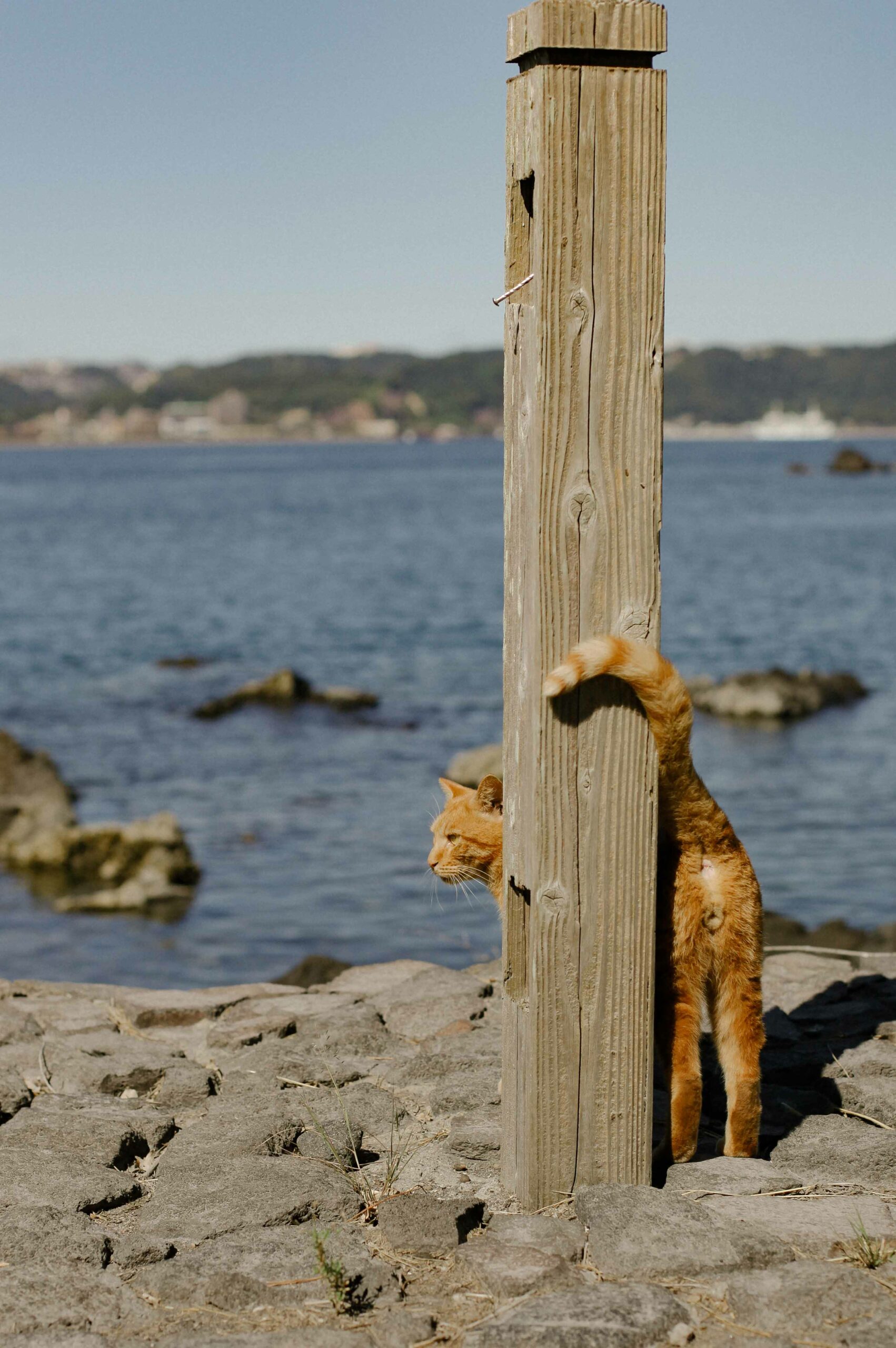
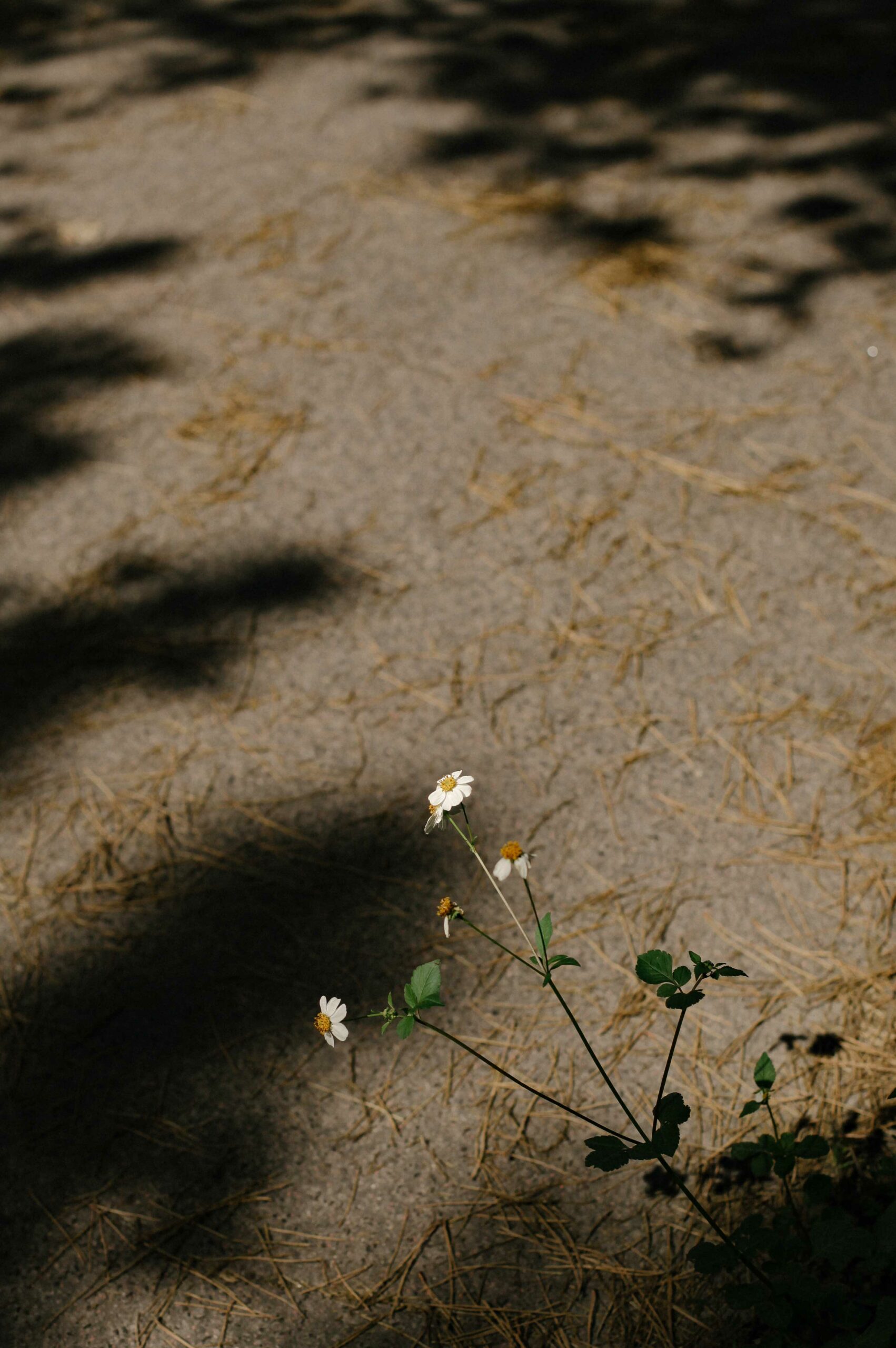
Once you’ve loaded up on unique volcano-ware, get back on the Island View loop bus and alight next at the Sakurajima International Volcanic Sabo Centre. This free centre offers detailed insight into the science, engineering, and social elements of living with and mitigating volcanic risk. For people who haven’t grown up in volcanic regions, the idea of voluntarily living in the shadow of a volcano seems like a bizarre choice. However, in addition to highly fertile soil, volcanoes offer abundant opportunities to harness geothermal energy. They’re natural engines of sustainability, and people will always gravitate towards them. For this reason, then, managing risk in volcanic zones will always be a vitally important field of study. The Sabo Centre offers a chance to learn more about these risks and mitigation efforts, and is ideal for anyone interested in volcanoes, geology and human geography.
When your mind is ready to overflow with your newfound volcanic knowledge, it’s time to hop back on the Island View bus and relax; you’ll have a 25-minute ride to the Yunohira Observation Deck. The views on this section of the bus ride are spectacular, and you’ll ascend the volcano flanked by endless rows of satsuma trees, radish fields, and sea views. The Yunohira Observation Deck is also the closest you’ll be able to go to Sakurajima volcano itself. Based on the Japan Meteorological Agency’s volcano warning system for Sakurajima, the volcano is almost always listed as a Level 2 or 3 threat. Level 2 restricts anyone from entering a 2.5km exclusion zone around the volcanic crater, and Level 3 widens this to a 3km zone. Things can escalate quickly; on February 14th, 2024, Sakurajima erupted, sending lava bombs and dense plumes of ash and volcanic lightning 5km into the air. Webcams that point permanently at the volcano recorded the eruption; you may want to watch the recording after you’ve visited.
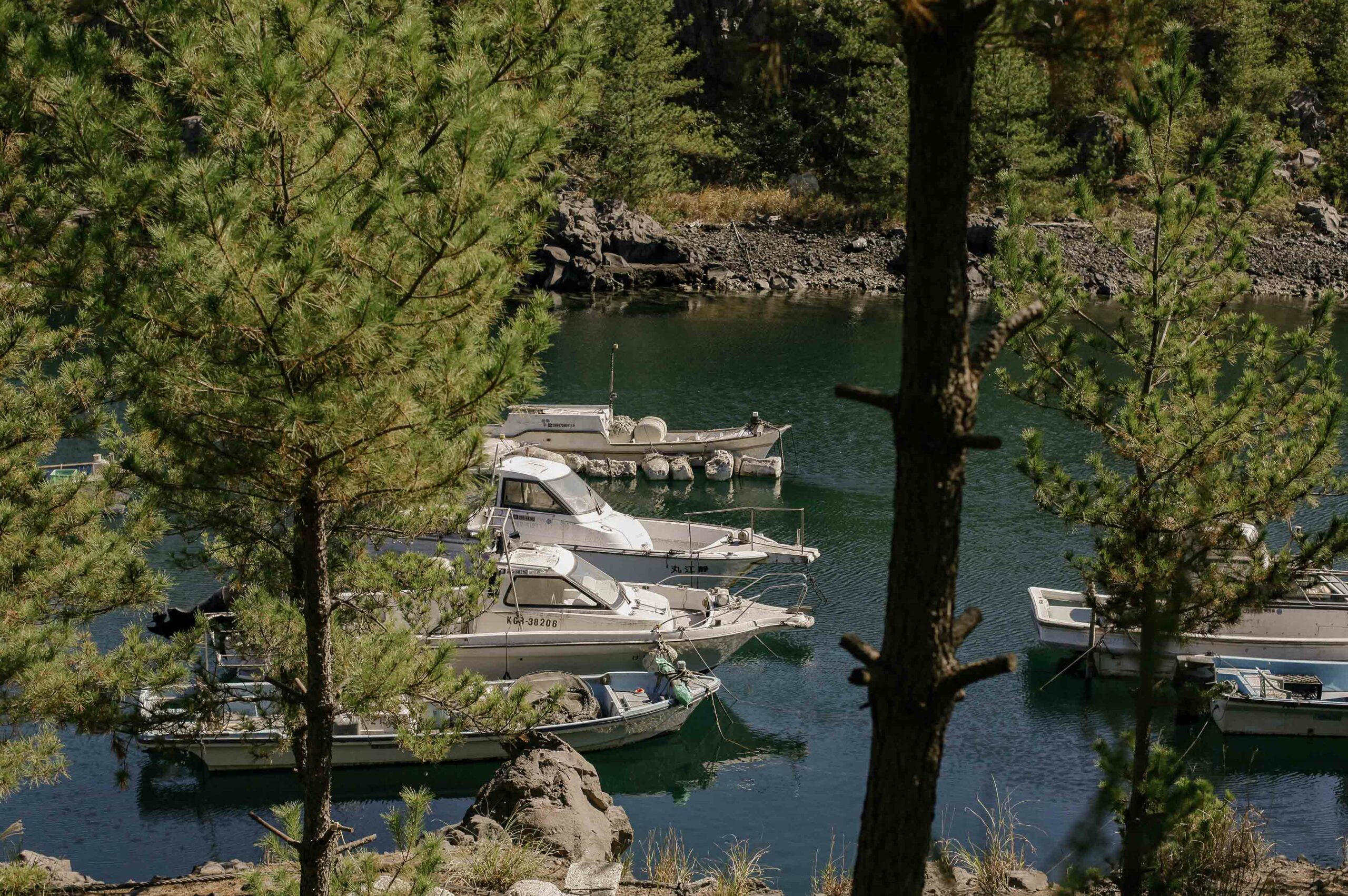
Yunohira offers visitors a chance to look upon the resting face of earth’s most powerful forces. Sakurajima’s daily eruptions are harmless enough, but each ejection of ash and pumice sends out a powder-fine rain of silica and iron ash. As these layers fall atop one another, small earthquakes cause slice-like faults along the tightly compacted ash. In the same way that glaciers calve into the open ocean in immense sheets, the loose volcanic topsoil can slip downwards along clean faults, most often during heavy rain. Without even erupting, the volcano can send deadly mudslides thundering down its slopes. In many volcanic regions, it is the mudslides (known as ‘lahars’) which cause the most devastation. The volcanic explosion at Nevado del Ruiz, Colombia, in 1985 is the most infamous example.
Japan, however, has always lived with the perils of the earth’s titanic geological forces; it exists because of them. As such, Japan’s geological institutions are quite simply the best in the world, and the ongoing development of world-class risk mitigation programs remains a national priority. Here, on tempestuous Sakurajima, you can rest assured that your visit is a result of carefully calculated risk, and world-class volcanic expertise. Breathe a sigh of relief as you wander around the circular Yunohira Observatory, enjoying sea views over Kagoshima. If you’re visiting towards the end of the day, Sakurajima’s west-facing flank will be illuminated in a deep red-orange, as the setting sun sinks behind you. Riding the bus back to the port, you’ll once again pass through evidence of the volcano’s abundant gifts. The plants here rise up fast and strong, with fruit and vegetable crops achieving almost comical sizes. The valleys are lush and green year-round, and the people of Sakurajima make their living from the volcano in various ways, be it tourism, geology, agriculture, or crafts. The juxtaposition of everyday lives against a backdrop of unimaginable power is both humbling and inspiring.
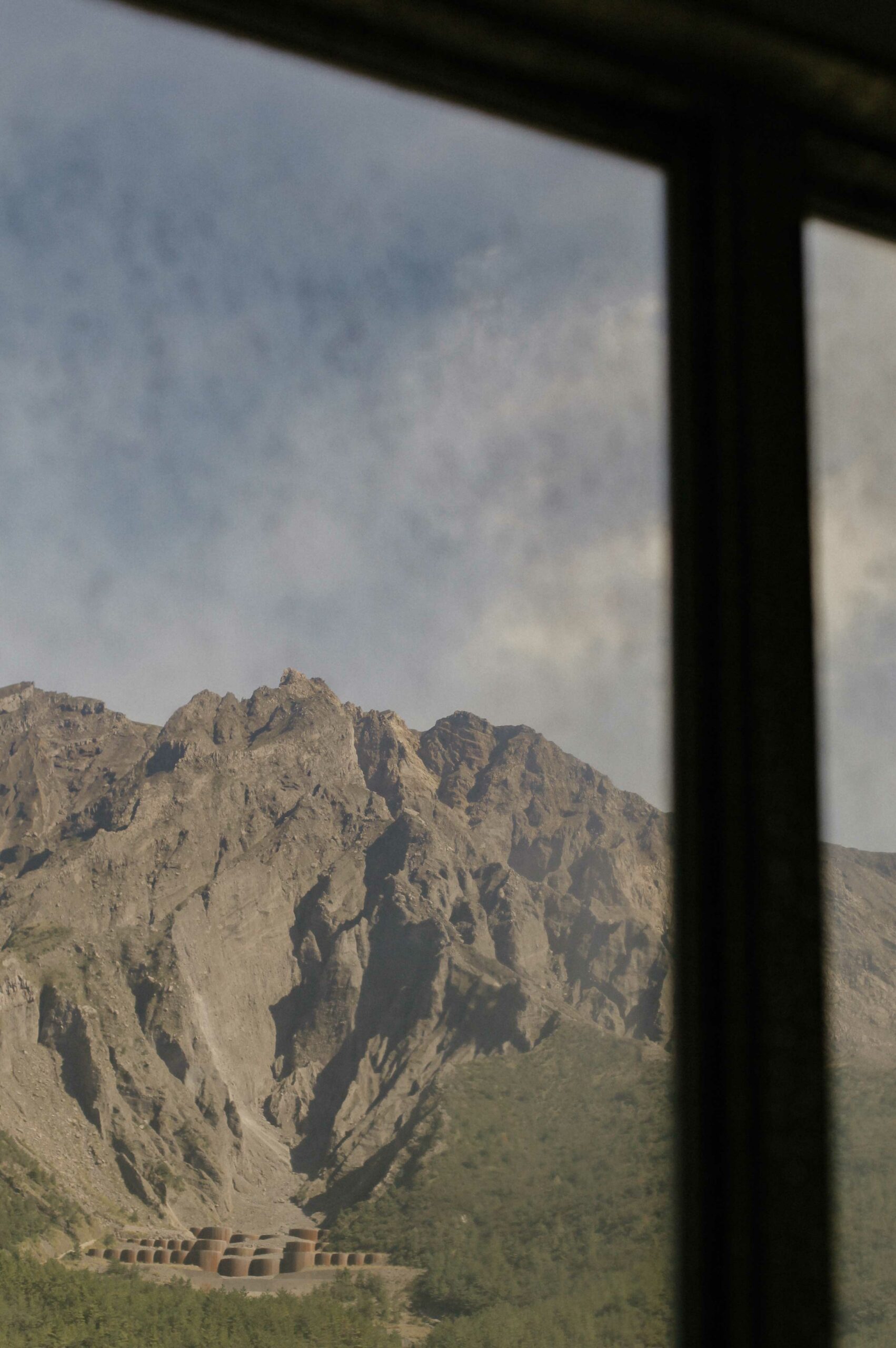
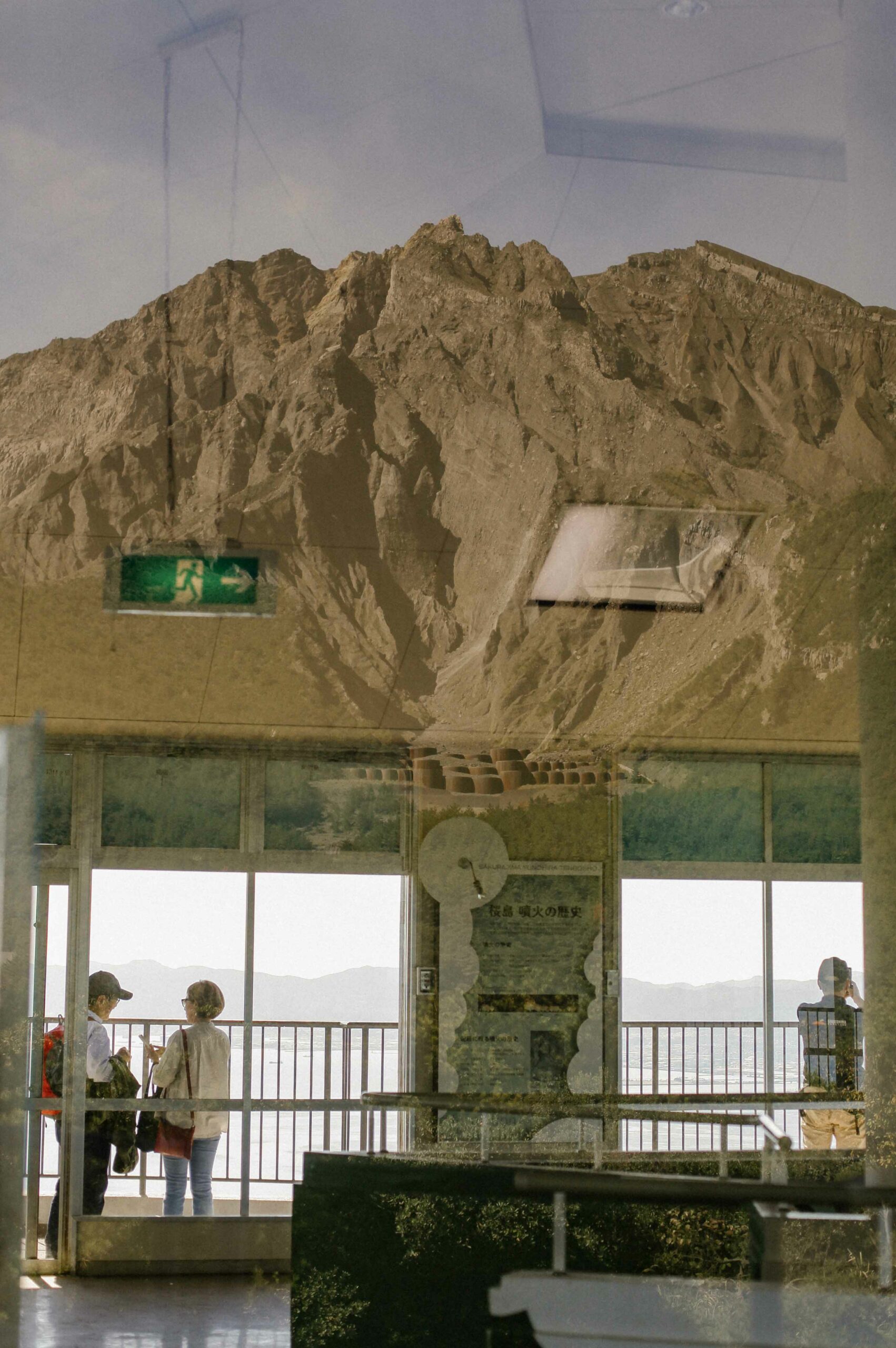
Access: The Sakurajima ferry leaves from the ‘Sakurajima Ferry Terminal’ in Kagoshima city. Most visitors arrive at Kagoshima-Chuo station (as opposed to ‘Kagoshima’ station), as it’s a bullet train terminal. From Kagoshima-chuo, taking the Kagoshima City Tram #2 is the easiest way to go; follow this route to arrive at the Sakurajima Ferry Terminal.
Name: Sakurajima (桜島)
Address: Sakurajima Port, 2 Sakurajima Yokoyamacho, Kagoshima City, Kagoshima Prefecture 891-1419
Open: Always open, except during exceptional (Level 4 and 5) volcanic alerts. Check here to stay up to date with Sakurajima’s volcanic activity.
Admission: A ¥200 ferry ride to access the island.
Website: https://www.kagoshima-yokanavi.jp/en/feature/sakurajima2
A reminder that every single English language pamphlet you could need for Kagoshima and Sakurajima is available as a free PDF, here.
Post by Japan Journeys.



